Top attractions:
Satellite race
The advancement of missile technology and new achievements in electronics was not only beneficial to ballistic missiles use for the military purpose, but for space exploration as well. The U.S. and Soviet generals considered the space to be a new battle arena, though, the first successes had more political and scientific importance than it had for the military.
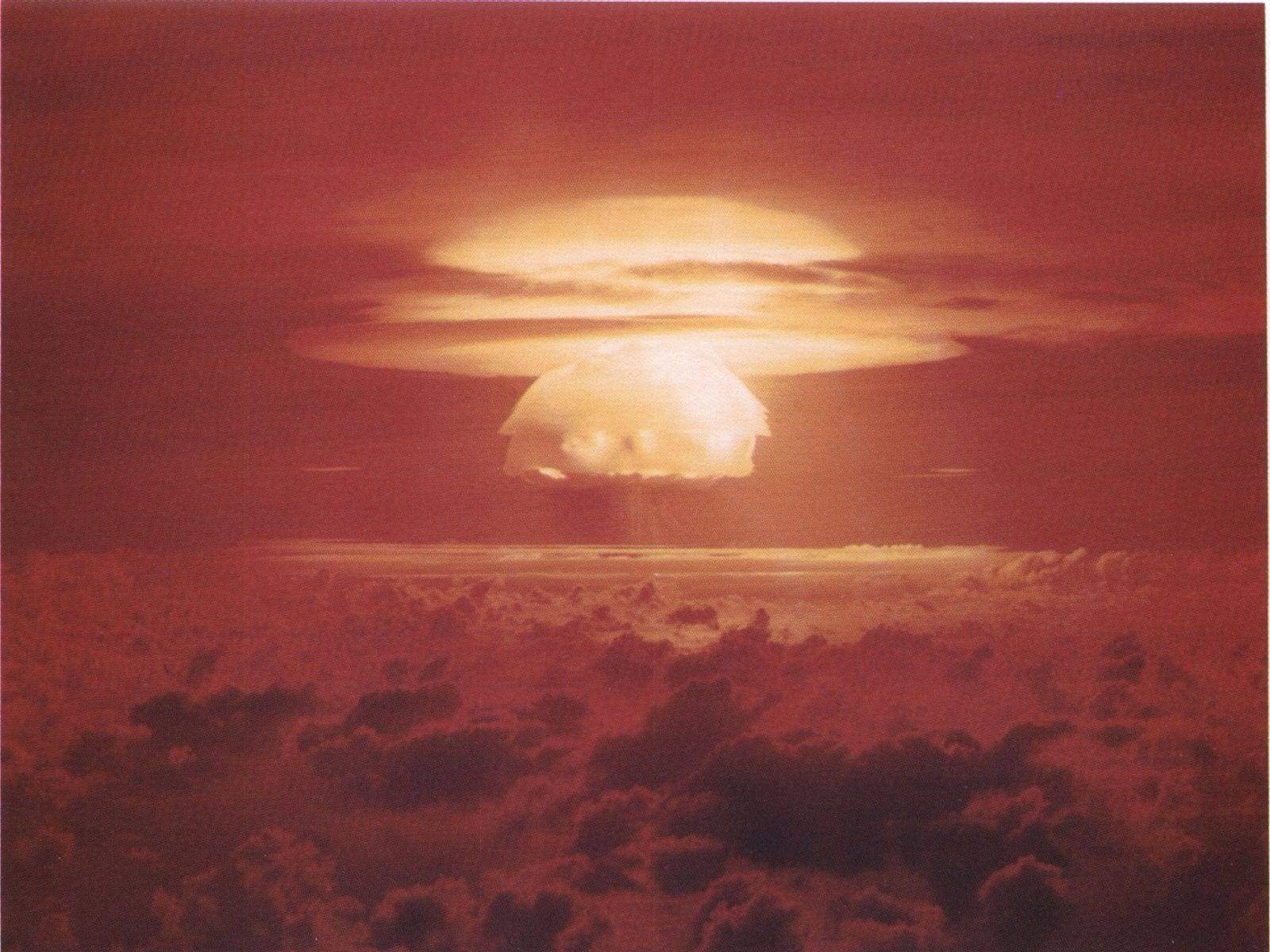
By United States Department of Energy [Public domain], via Wikimedia Commons
The beginning of the Cold War
In 1952 the US tested the most powerful weapon the World has ever seen — a nitrogen bomb. Just one year later the Soviets repeats the sane testing of an H-Bomb. The race is on for the Nuclear supremacy as both sides fear the preemptive attack from the opposing power, the fear which results at the beginning of the Cold War by showing of their scientific and military advancement.
A new Challenge
After a successful Hydrogen Bomb test, chief rocket designer, Sergei Korolev gets the challenge of a lifetime as the Soviets has new demands for the rocket lifting power. The USSR fears that delivering the bomb by an aircraft or a submarine is too slow. The new inter-continental missile is supposed to be capable of lifting 5 tons — the weight, estimated by the physicists, of proposed next-generation H-Bomb, and deliver it to a target over a distance of 8,000 km, which makes it capable of reaching the U.S. territory. The Soviets hope that a threat of a Nuclear attack on America will make them think twice before using a tactical attack by this deadly weapon on the USSR territory.

By Nasa / Peter Gorin / Emmanuel Dissais [Public domain], via Wikimedia Commons
At that time the team of Sergei Korolev had no concepts of such a powerful missile, but Korolev didn’t hesitate to take the task as such rocket would be capable of escaping the Earth’s gravity and lifting the mankind up to space. The first obvious task would be lifting a satellite into the orbit of Earth, then man-flight would follow. Sergei Korolev is eager to start the project as he fears that the Americans with the help of Wernher von Braun will do it first.
Von Braun’s Crisis
What Korolev didn’t know, is that Wernher von Braun was facing a major crisis in his career. Restricted by the U.S. military to develop only short-range missiles, he cannot pursue his ambitions. As the U.S. kept cutting the funding, even his team started to doubt a possibility that the Americans will ever want to make a space program. Without building a bigger rocket there is no hope of launching a satellite. Wernher von Braun kept planning of how to make the public of the U.S. interested in a space program to get the funding he direly needed, but what he didn’t know is that he had a rival on the other side of the Iron Curtain.

Alex Zelenko [GFDL (http://www.gnu.org/copyleft/fdl.html) or CC BY-SA 4.0 (https://creativecommons.org/licenses/by-sa/4.0)], via Wikimedia Commons
An ambitious new rocket
The requirements for a new rocket, capable of lifting a hydrogen bomb, was five times the weight, over fifteen times the range, twice the velocity and twenty times the energy of the Soviets’ biggest rocket. Korolev understood that building this rocket will bring the science to another level as he imagined the next generation of rockets will have to drastically increase in size. The rocket supposed to be so big that they had to design the launch site from scratch as well.
Even though it might have looked impossible, Korolev was determined to pursue his goals. To make it possible he had to reunite with the same person who denounced him during the Stalin’s purges — Valentin Glushko. Glushko was quick to point out that it was impossible to achieve such a rocket with a single engine and it became obvious to Korolev that they’ll need a rocket with several engines attached to it. Despite Glushko being concerned if the Korolev’s rocket design was even possible, he agreed to take the gamble with one condition that the engine department will be his alone.
Korolev didn’t waste his time, as he was still designing the rocket he started to promote the idea of lifting a spy satellite into the Earth’s orbit to the military officers. Sadly, for Korolev, the military remains skeptical about the space program and keeps directing the missiles equipped with nuclear warheads toward tactical targets in the U.S. as a top priority.
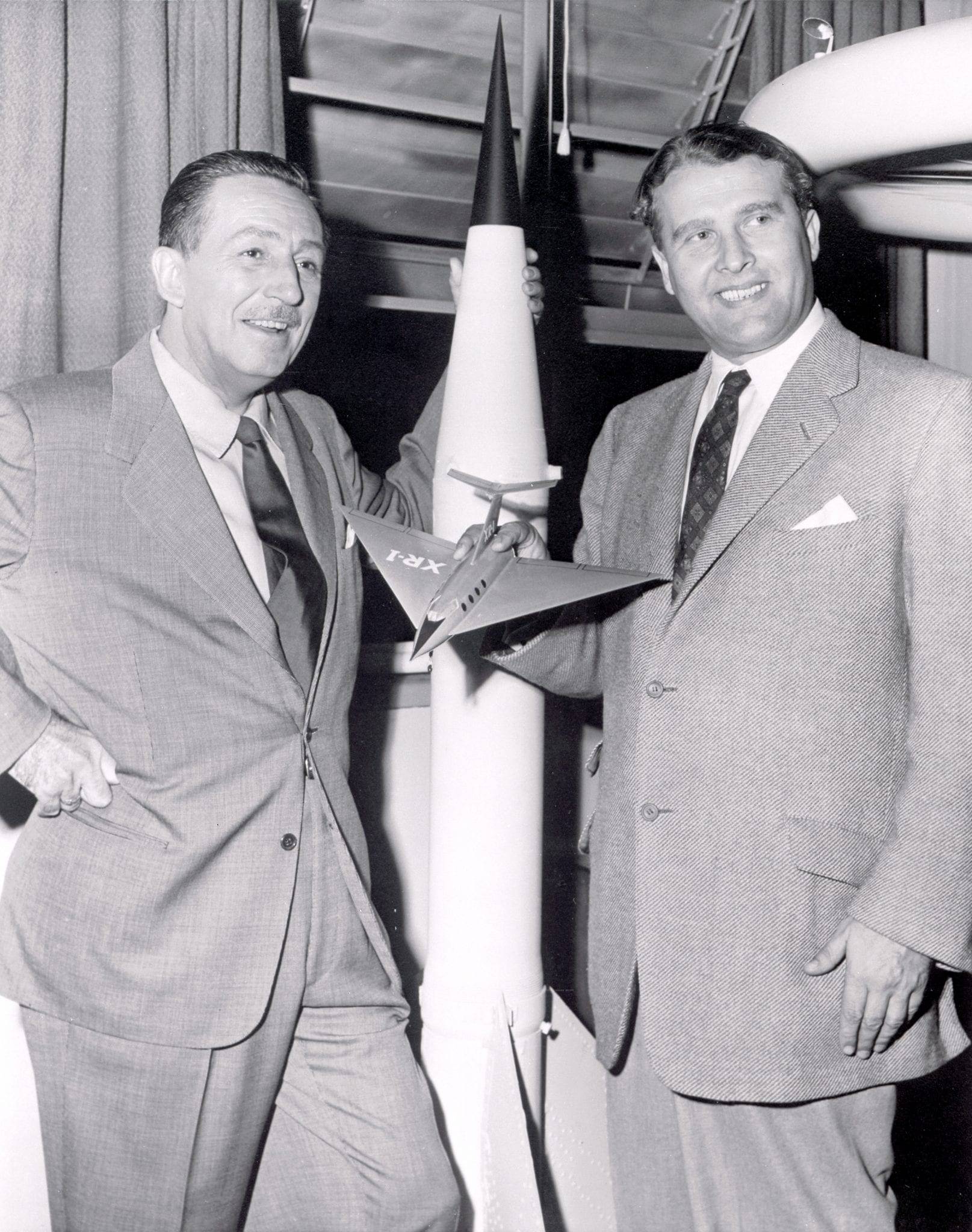
By NASA (Great Images in NASA Description) [Public domain], via Wikimedia Commons
Von Braun’s plan
Wernher von Braun was not sleeping as well, unable to get funding for rockets capable of escaping the Earth’s gravity, he tries to outflank his military superiors and persuade Walt Disney Productions to sell his dreams of space exploration directly to the American public. Exposed to 40-million viewers on prime television channels von Braun’s ideas quickly catches the attention of the people, which, behind the scenes, starts to move the things toward his goals.
Unlike the Soviets, the Americans build a secret plan to launch a spy satellite under cover of a public announcement of a scientific unmanned satellite program.
Korolev and von Braun’s struggles
These news alarms Sergei Korolev as he gets afraid to be out-paced by the American opposition and lose his chance to be the first to lift the mankind into space. Though, he didn’t know that von Braun must compete against the local scientists for the satellite program contract. He tries to apply for the American citizenship with a hope to improve his chances to win the program for his team. Despite the shadow of his dreadful Nazi past, due to a lack of interest in the political arena, in 1955 he convinces the U.S. government to grant him, his team and their families an American citizenship.
Still, all the struggles of von Braun were not enough to convince the U.S. that he and his team is supposed to lead the production of a rocket capable of lifting the satellite. The Americans wanted their first American rocket capable of escaping the Earth’s gravity to be an American product, not an ex-Nazi one. The U.S. navy wins the contract for building inter-continental missiles, capable of lifting not only a nuclear bomb but a satellite as well.
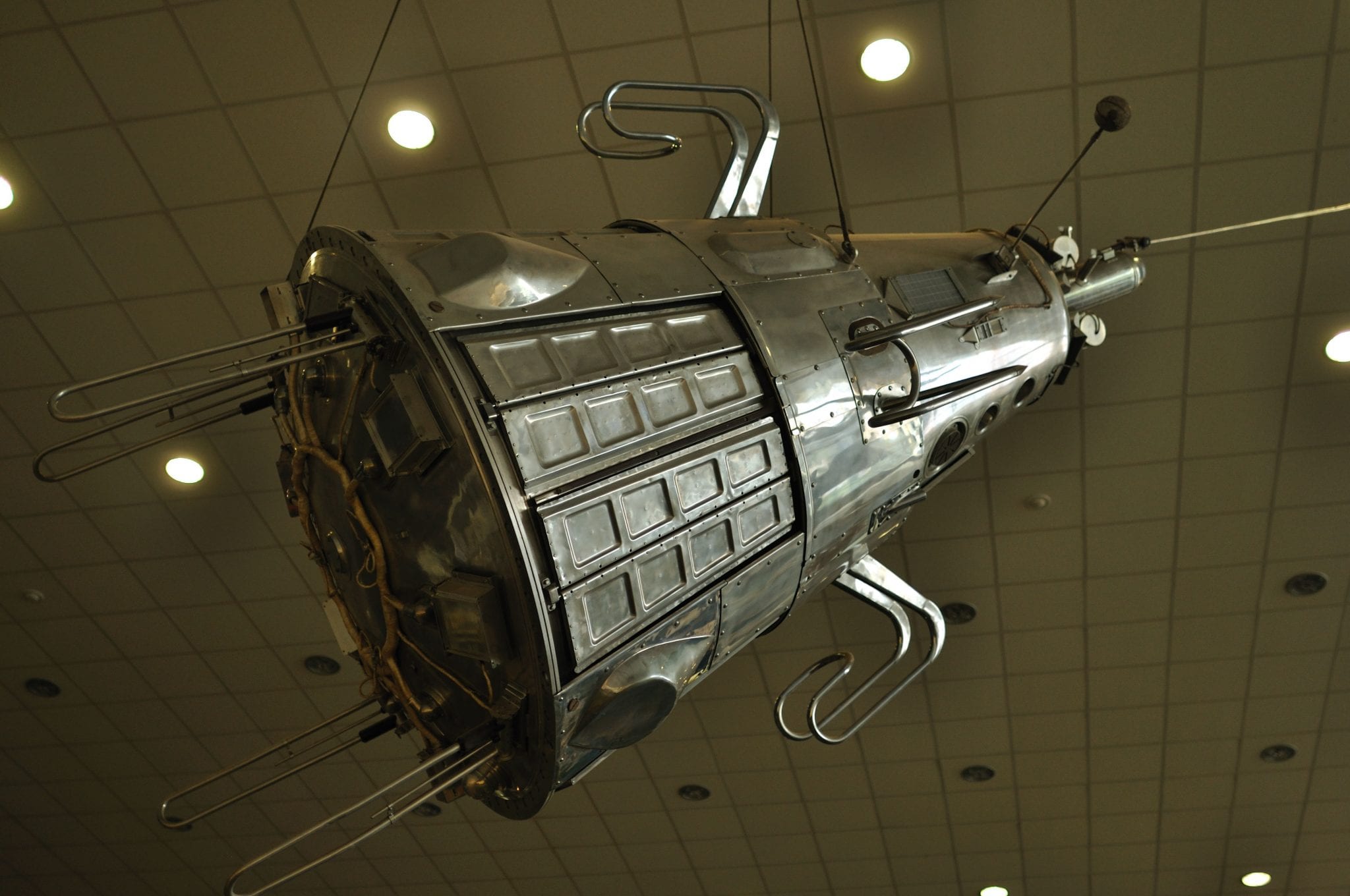
By Енин Арсений [CC BY-SA 3.0 (https://creativecommons.org/licenses/by-sa/3.0)], from Wikimedia Commons
Turn of tides on the Soviet front
The new R-7 rocket with a weight of 280 tons and a lift-off thrust over 400 tons bigger than anything achieved before, it had approximately 6.4 million horsepower. Impressed by its capabilities, Nikita Khrushchev approves the mass production of these rockets, it is when Sergei Korolev uses the success of his project to convince his superiors of launching an unmanned satellite into the Earth‘s orbit.
Blessed by Khrushchev, Korolev wastes no time starting to build his satellite codenamed object D. He gets dozens of the Soviets institutions involved in his prestigious project.
Kickstart for von Braun‘s American Jupiter-C rockets
Both sides keep testing stronger and stronger nuclear weapons, which naturally increased the paranoia of both sides. With an urgent need of medium-range missiles, von Braun‘s team gets a chance to prove their expertise as they get funds to do it.

By NASA (Great Images in NASA Description) [Public domain], via Wikimedia Commons
The first rocket capable of lifting a satellite into space
Although way less powerful than Korolev‘s R-7, Jupiter-C could launch a small satellite. With that in mind, after a successful test of the rocket, Wernher von Braun keeps pressuring Washington that they already could have launched the satellite into the Earth‘s orbit and be the first country to do it in the history of humankind. Knowing that his rocket could lift a satellite at any time, risking court-martial, von Braun hides some parts of his rocket to be ready for a launch in case the Navy fails to deliver a rocket capable of lifting a satellite.
Korolev‘s last chance
It took only two years for the Soviets to transform, currently in Kazakhstan, the City of Baikonur into the first spaceport in the world. On May 20th, 1957 the Soviets fails their first test of an R-7 rocket 90 seconds into the flight. The rocket gets destroyed with all of its 32 engines, which infuriate Valentin Glushko. He sees the Korolev‘s design of the R-7 rocket too ambitious. In June things get even worse as three mechanical failures prevent take-off of three more test flights, following another explosion after 33 seconds of flight in July. Korolev is given one last chance to successfully launch the R-7 rocket, luckily, the sixth test flight successfully hit the test target 5,000 km away, which is far enough to reach the U.S. The R-7 rocket becomes the first ICBM (Inter-Continental Ballistic Missile).
The simplest satellite — Sputnik I
Under a heavy pressure, his satellite went through a transformation, after abandoning a heavyweight object D, the team built a replacement in less than a month. The Soviets were afraid that the Americans will launch their first satellite first, so it was proposed to build a simplest possible satellite. The simple sputnik had a weight of only 83 kilograms, the lighter the satellite is, the less lifting power is required.
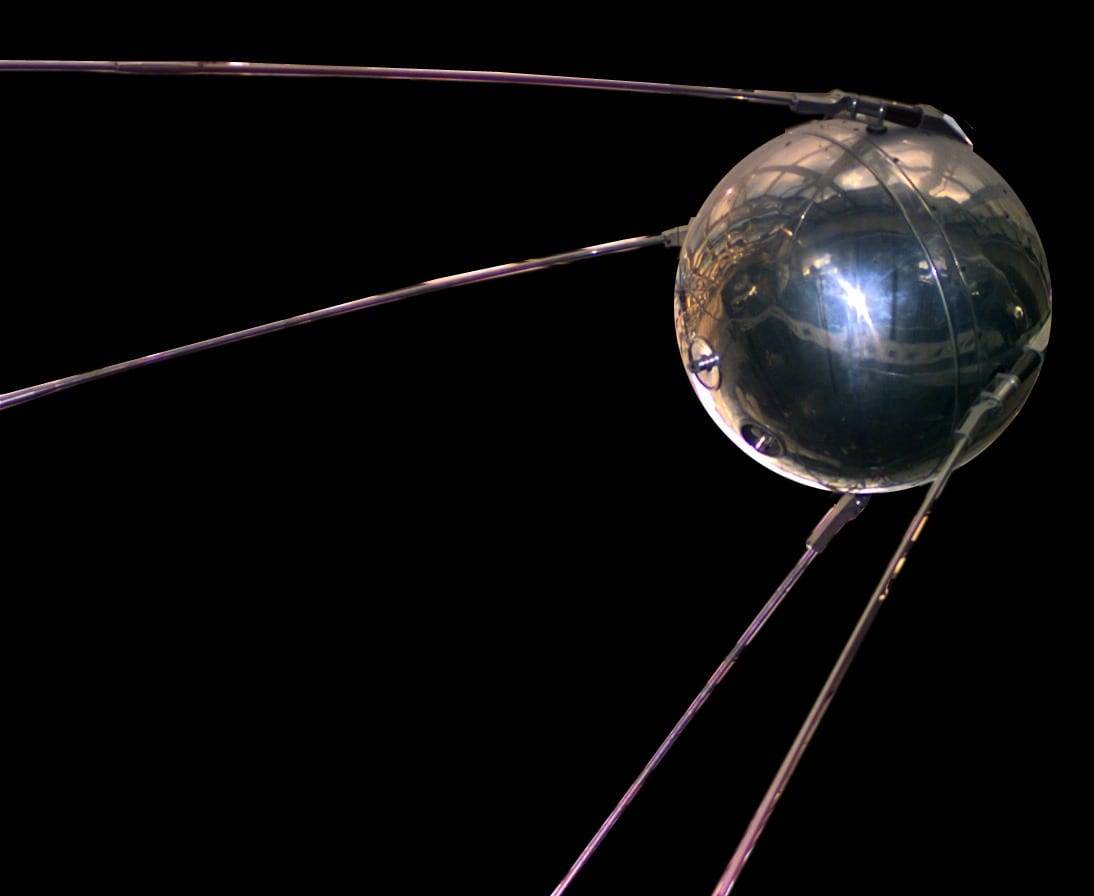
By NSSDC, NASA[1] [Public domain], via Wikimedia Commons
To prove the world that his satellite is in the orbit of the Earth, Korolev needs too transmit a signal from space back to the Earth, which was just a simple beeping. On 4th October 1957, the Soviet Union launches the first ICBM, carrying not a deadly nuclear bomb, but the first artificial Earth satellite — the famous Sputnik 1. After 90 minutes of waiting, three minutes past midnight Moscow time, the Soviets receives the signal from the Sputnik, marking it as a successful launch of the first man-made satellite to orbit the Earth.
Despite the fact that launching the Sputnik into space was a huge achievement for science and the Soviet Union, it was just a start fulfilling Korolev‘s dream. He knew that and he hoped that he had enough time to achieve it.
Sputnik I was not put in space for communication purposes, it took 9 years until the first Soviets‘ communication satellite, Molniya, to be launched into space in 1965.
Missile gap
The launch of the Sputnik, naturally, upsets Wernher von Braun as he knew that his Jupiter-C was capable of lifting a satellite a year before the Soviets did it. He was not the only one to get upset, it was a big hit to the American pride and put president Eisenhower under a heavy pressure to close the so-called missile gap. The U.S. knew that a peaceful and simple Sputnik orbiting the Earth meant that the Soviet Union possesses a rocket capable of carrying a nuclear bomb to the American territory.
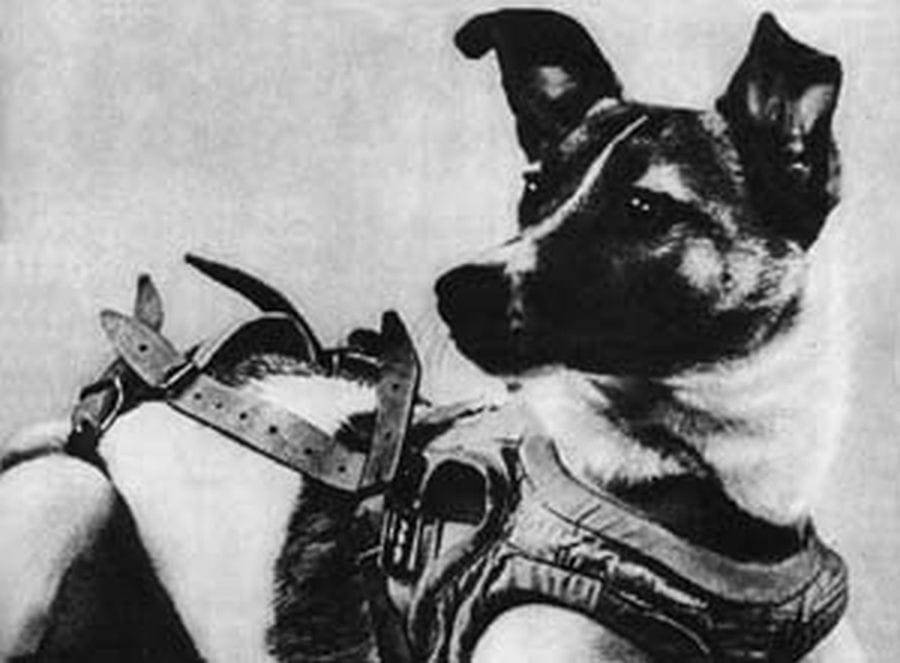
If it is copyrighted it is likely to be by the Soviet (now Russian) Space Program via TASS., via Wikimedia Commons
The legacy of Laika
Meanwhile, Korolev was poised to launch a second Sputnik, this time, with a passenger — the legendary dog Laika. Just a month later, on 3rd November 1957, Laika becomes the first dog and the first living creature to leave the Earth on a man-made spacecraft into space. Laika survives just over five hours in the orbit before dying of heat exhaustion. Sputnik was not designed to be retrievable, Laika had always been intended to die.
Despite the tragedy of her destiny, Laika proved that a living organism is capable of surviving of being launched into orbit and endure micro-g environment, clearing the way for human spaceflight and providing some first data of how a living organism reacts to spaceflight environments. Future space missions carrying dogs were designed to be retrievable, four other dogs died in Soviet Space missions: Bars & Lisichka died on July 28, 1960, in an explosion of an R-7 rocket shortly after the launch; On 1st December 1960, Pchyolka and Mushka were killed, when Korabl-Sputnik 3 was destroyed on purpose to prevent the foreign powers from inspecting the capsule after it reentered the Earth‘s atmosphere on an incorrect trajectory.

See page for author [Public domain], via Wikimedia Commons
The doubt of such behavior remained even within the people who were responsible for such tests, as Oleg Gazenko stated:
Work with animals is a source of suffering to all of us. We treat them like babies who cannot speak. The more time passes, the more I’m sorry about it. We shouldn’t have done it … We did not learn enough from this mission to justify the death of the dog.

By NASA ([1], [2], [3]) [Public domain], via Wikimedia Commons
Turn of tides in the U.S. front
to Ironically, in the U.S., the man to blame for the missile gap was Wernher von Braun, which was not as bad as it sounds. In his defense, he was finally heard and got a funding to launch of the first American satellite under the condition that U.S. Navy still has the first shot to do so. Von Braun didn’t sleep, he wanted to launch the satellite as soon as the Navy gets their shot. He gathered a team responsible for the production of a small satellite fitting into the top of Jupiter-C rocket. He called it — Explorer.
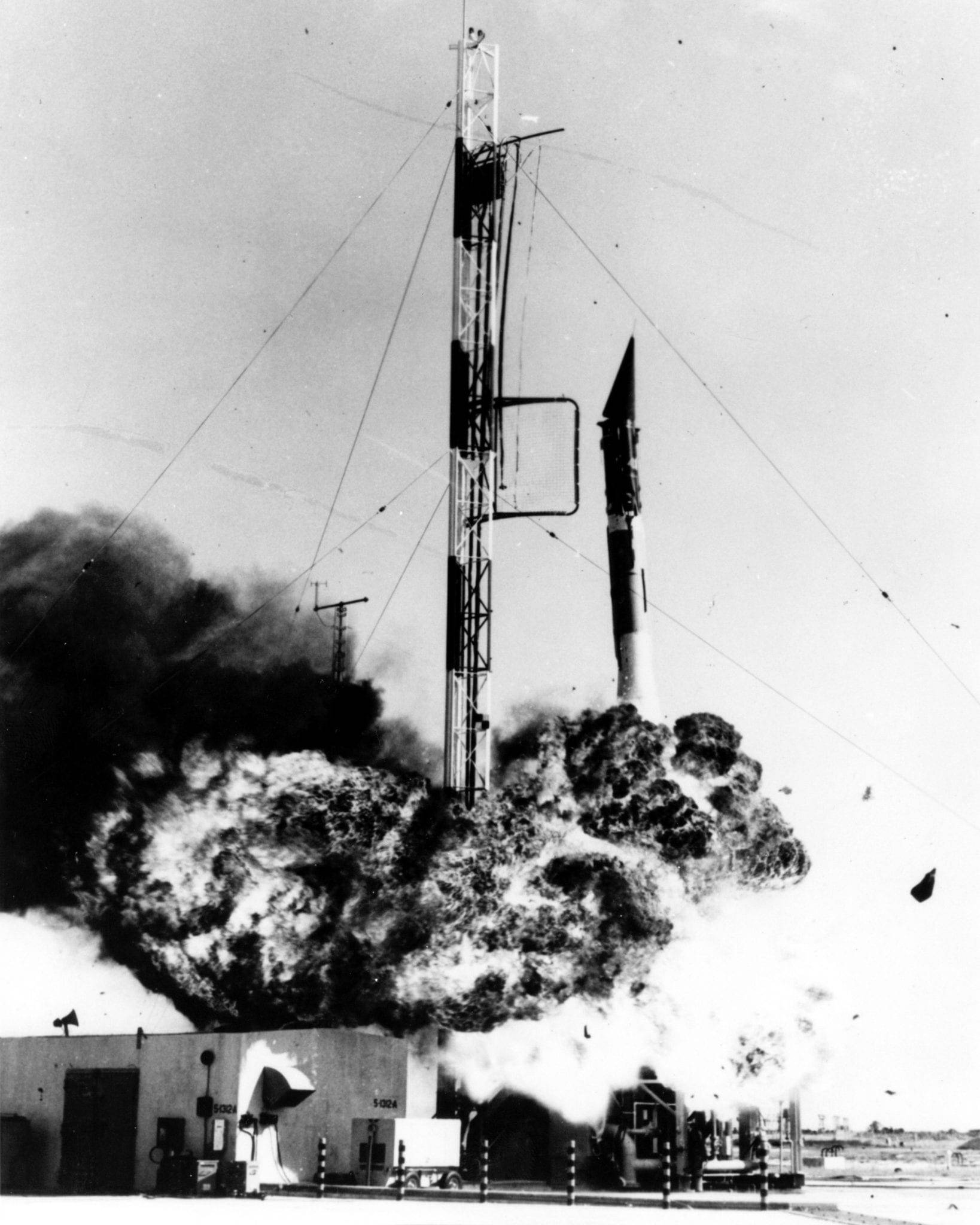
By U.S. Navy (Great Images in NASA (image link)) [Public domain], via Wikimedia Commons
Vanguard Rocket
Under heavy pressure, the U.S. Navy rushes to launch the satellite on a never-tested Vanguard rocket, which results in a huge failure when the rocket explodes just after 1 meter of ascension. The only thing to survive was the satellite transmitting the signal from the ground nearby, where it was blown away by the explosion. From 1957 to 1959, only three out of eleven attempts to place a satellite into orbit using the Vanguard rocket were successful.
The Space Race
Four months after the launch of Sputnik, On January 31st, 1958 after a successful launch, Explorer I becomes the first American satellite to orbit the Earth. It outdid the Sputnik by its technological capabilities of gathering scientific data with a cosmic ray detector. At last, Wernher von Braun achieved his dream of opening the gates to the heavens and was able to fully challenge his rival on the other side of the Iron Curtain, Sergei Korolev, of whom the U.S. was still not aware of. After the U.S. evened-up the score to 1:1, both sides found themselves in the Space Race, and both of them intended to win it.

Atlas-B with SCORE on the launch pad via Pinterest
Further developments of the satellite race
Even though the United States were not the first to launch a satellite into space, Project SCORE was the first communications satellite launched into space on December 18, 1958.
In 1967 Soviets create the first tactical satellite able to destroy enemy spacecraft. Fortunately, the Soviet Union and the United States agreed on banning the use of space for armament deployment in the same year. Even with the ban, space remained an ideal location for military reconnaissance and communications equipment.
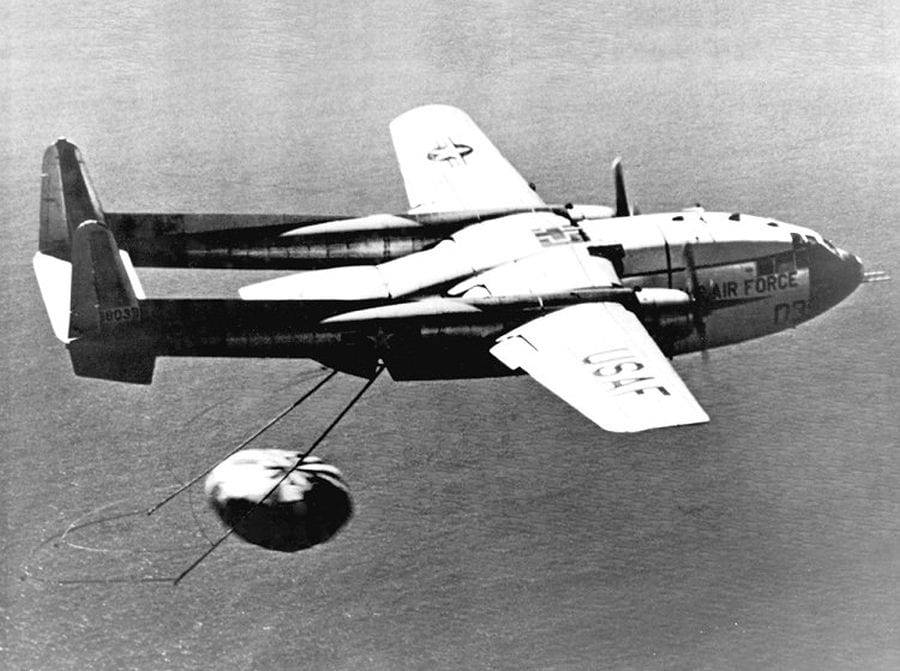
via Wikimedia Commons
The reconnaissance satellites
After successful development of reconnaissance satellites, U.S. in 1959 launch the first satellite of their „Keyhole CORONA“ program in response to the massive deployment of the Soviet medium-range missiles R-12 and R-14 along the Soviet border. These reconnaissance satellites were equipped with high-quality cameras, they have not only scanned the area but recorded everything on the film as well. Reconnaissance satellites revised military data, observed moving troops and discovered new military bases, which often became a potential target for nuclear tactical warheads.
The Soviet Union couldn‘t destroy these reconnaissance satellites, but they paid particular attention to their activities and opportunities. Any activity inside missile bases, during the satellite flight over it, was closed down and missile silos together with command points were shut down entirely. Otherwise, the satellite equipped with infrared sensors could detect the temperature differences on the surface and hence identify the location of underground bunkers.

Photo which revealed Plokštinė missile base, taken in the Cold War Museum, Lithuania
With time and the advancement of photographic technology, it turned harder and harder to mask the military objects. Ultimately, it became clear that sooner or later any military base will be discovered, which led to the development of mobile ballistic missile systems.